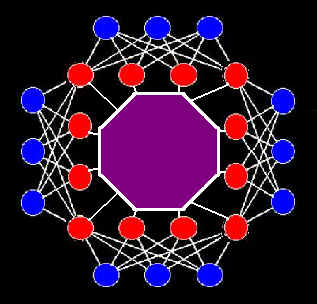Breakthroughs

In order for our future technology to become a reality many breakthroughs in present technology must occur. First, more complex neural networks would have to be devised that would function like neurons and be accepted properly in the human brain and work well with the other cells in the brain. These neural networks would have to be expanded and must be able to carry out complex operations. Next, the microchips or nanochips in the neural networks must be small enough to be able to integrate and communicate with human neurons. Third, neuronal networks must be adapted to be able to interpret chemical and electrical impulses from the sensory and association cortices of the brain to initiate the many actions of the personís paralyzed limbs. With our future technology we would strive to make it possible to restore function to paralyzed body parts.
Below is a diagram of what we envision to be a futuristic neural net.








